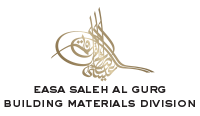A Highlight on benefits of copper pipework
July 17, 2020
Although the road to recovery is likely to be a long one, the construction industry continues to be hugely important to an economic upturn in the Gulf. For HVAC and MEP contractors, operating in these unprecedented times has turned the focus not just on the way we work but also on health and hygiene.
Richard Franks, Gulf Business Unit Director for Conex Bänninger, outlines the benefits of copper pipework material and how it can help combat infections such as legionella.
Legionella is a type of bacterium found naturally in freshwater bodies such as lakes and streams. It can become a health hazard when it grows and spreads in man-made building water systems like sink faucets, shower heads, bathtubs etc.
Anti-Microbial Properties of Copper
The use of copper pipework for installations in construction projects has grown in importance considering health and safety measures, alongside economic renewal.
A key reason is copper's anti-microbial properties. In many healthcare and medical environments, which require the strictest hygiene performance specifications, copper pipework has been the number one plumbing material of choice.
Copper attacks a wide range of water-borne bacteria, including Legionella, and helps prevent a multitude of infections such as "swimmer's ear'".
Direct contact between copper's surface and the bacterial outer membrane causes it to rupture. As a result, the bacterium loses vital nutrients, water and dies. This effect of copper and copper alloys is recognised by several major scientific bodies.
Use of Copper in Water Systems
In 2014, the independent non-profit making ECRI Institute (formerly known as the Emergency Care Research Institute), whose guidance is looked upon by more than 5,000 healthcare organisations worldwide, listed anti-microbial copper as ‘one of its Top 10 Technologies to Watch'.
Of course, proper water hygiene continues to be absolutely essential with EN806 taking over from BS6700 as the applicable industry standard covering ‘specifications for installations inside buildings conveying water for human consumption’. This makes copper an essential material to specify at the design stage of a new drinking water system or a refurbishment too.
As a general rule for drinking water, keep cold water cold and hot water hot. Up to 20°C bacteria can survive but are not active. At 60°C and above, about 90% of bacteria will be killed within two minutes. The ‘optimal zone’ for bacteria to thrive is between 45°C and 60°C.
With closed sites and buildings opening up as restrictions ease, it has also highlighted risks around water supply and heating systems that may have been inactive, with chances that the mix of high temperatures and stagnant water has created conditions for legionella.
It is, therefore, essential to ensure proper cleaning and flushing of water systems that have not been operational, and also checking that temperatures on hot water systems are set correctly.
Copper: A Noble Metal
It’s not just the antimicrobial properties of copper that make it an ideal pipework solution.
What are some of the key benefits of Copper?
1. As a 'noble metal' it resists corrosion and compares favourably to steel and iron
2. It is non-flammable and has a melting point of 1,085°C
3. It is extremely resistant to high and low temperatures
4. It is 100% reusable, and can be recycled at lower costs compared to other metals
To find out more about the benefits of copper pipework as a preferential fitting material, take advantage of Conex Bänninger’s CPD programme. The programme is designed with specifiers and Mechanical & Electrical contractors in mind while stockists, installers and water suppliers will also find it useful.
While focusing on copper, the programme also looks at current legislation and codes of practice, and considers the full range of products and jointing solutions in the market, from solder and braze, to compression, threaded, press and push fit.
More About ESAG Building Materials
